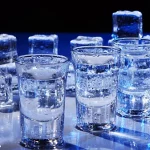The term aperitif is commonly used to describe any pre-dinner beverage, but it also specifically refers to a type of drink. These beverages are typically light, dry, and low in alcohol content, with distinctive bitter notes. Around one hundred years ago, bartenders began incorporating wine-based aperitifs into cocktails instead of simply serving them on their own before meals. This category includes quinquinas (or kinas), which contain quinine – a bitter extract derived from cinchona bark with a flavor similar to cinnamon. Some well-known examples include Lillet and Dubonnet. Lillet offers white, rosé, and red variations infused with citrus and subtle herbal flavors, while Dubonnet is a sweet combination of fortified wine, herbs, and spices.






